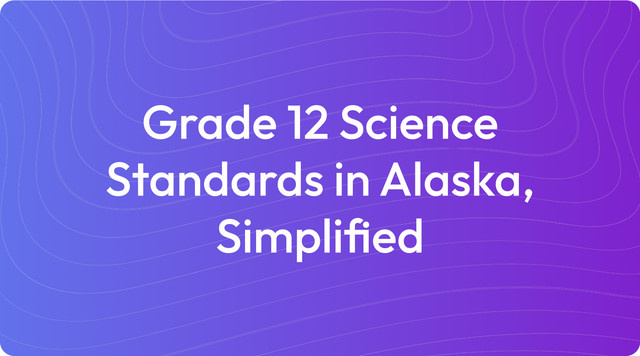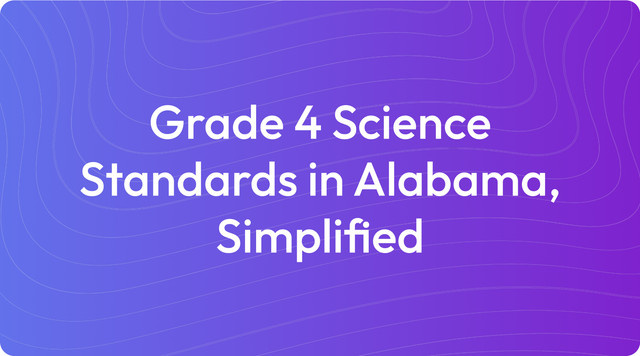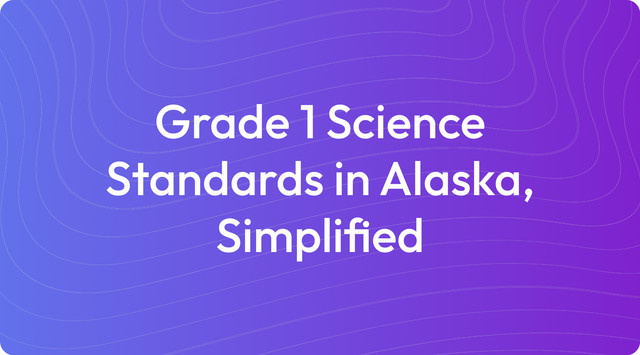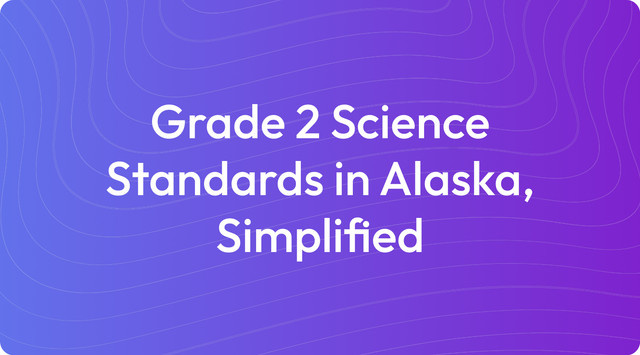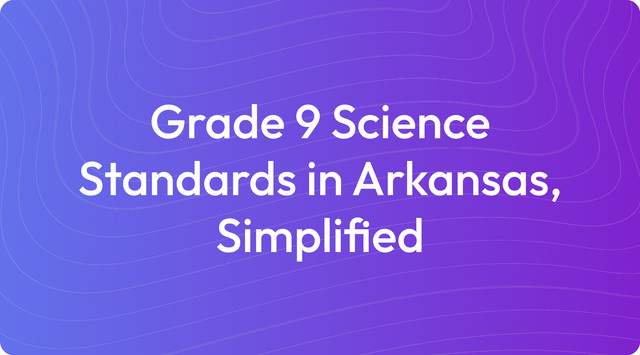Grade 3 Science Standards in Alabama, Simplified
Grade 3 science explores motion, life cycles, environments, and weather in Alabama. See the basics—read more on TeachShare!
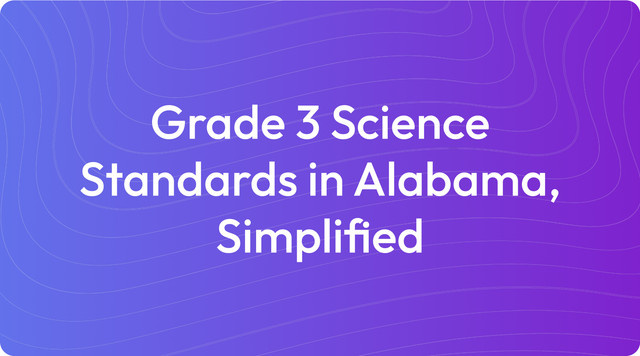
We understand that state standards can often feel complex and disconnected from daily classroom life. Our aim is to provide resources that help you connect these requirements to your instruction. This guide offers a straightforward look at what standards are and how they function within your school or district.
At a high level, education standards are learning goals that define what students should know by the end of a grade. For teachers, they provide a clear framework for instruction without dictating specific teaching methods. For instance, Alabama's third-grade science standards require students to conduct investigations on forces, giving you a clear objective for your lesson plans.
What Are Grade 3 Science Standards in Alabama?
The Grade 3 Science Standards in Alabama, based on the Alabama Course of Study: Science (2015), focus on foundational concepts in Life Science, Physical Science, Earth and Space Science, and Engineering Design. These standards emphasize hands-on experiments, critical thinking, and real-world connections to help students build a deeper understanding of the natural world.
Key Areas of Grade 3 Science Standards in Alabama
1. Life Science (LS): Habitats, Adaptations, and Ecosystems
Standard 1: Obtain and communicate information about the role of organisms in a habitat, including producers, consumers, and decomposers.
Standard 2: Investigate how plants and animals use structures to survive and thrive in their habitats.
Standard 3: Construct explanations about the effects of environmental changes on plants and animals.
2. Physical Science (PS): Forces, Motion, and Energy
Standard 4: Plan and conduct experiments to determine the effects of balanced and unbalanced forces on an object.
Standard 5: Investigate the relationship between energy and motion.
3. Earth and Space Science (ESS): Earth's Systems and Resources
Standard 6: Collect and organize data to identify patterns of weather over time in a particular location.
Standard 7: Develop models to describe the movement of Earth's water through the water cycle, including evaporation, condensation, and precipitation.
Standard 8: Observe how natural processes (e.g., weathering, erosion) and human activities change the environment over time.
4. Engineering, Technology, and Applications of Science (ETS): Problem-Solving
Standard 9: Design and test a solution to reduce the impact of natural Earth processes on humans (e.g., creating barriers to control erosion).
Key Learning Goals for Grade 3 Science in Alabama
Observation and Data Collection: Students collect and analyze data about ecosystems, forces, motion, and weather patterns.
Model-Building: Students create models to explain processes like food chains, the water cycle, and erosion.
Problem-Solving: Students engage in engineering challenges to design solutions for real-world problems, like protecting communities from natural processes.
The framework for these standards is guided by the Alabama Course of Study and draws from national topic arrangements like the Next Generation Science Standards.
Key Tested Standards
The Grade 3 Science Standards in Alabama, based on the Alabama Course of Study: Science (2015), focus on critical concepts in Life Science, Physical Science, Earth and Space Science, and Engineering Design. These key tested standards assess students' ability to observe, experiment, and solve real-world problems. Below are the key tested standards for Grade 3 Science:
1. Life Science (LS): Habitats, Adaptations, and Ecosystems
Standard 1: Obtain and communicate information about the role of organisms in a habitat, including producers, consumers, and decomposers. This standard focuses on how energy moves through an ecosystem and the specific roles different organisms have in keeping it balanced.
Standard 2: Investigate how plants and animals use structures to survive and thrive in their habitats. It introduces the idea of adaptation, explaining how organisms develop features that help them fit into their environments.
Standard 3: Construct explanations about the effects of environmental changes on plants and animals. This encourages critical thinking about how ecosystem changes, like droughts or pollution, affect living things.
2. Physical Science (PS): Forces, Motion, and Energy
Standard 4: Plan and conduct experiments to determine the effects of balanced and unbalanced forces on an object. This standard introduces foundational physics concepts, such as force, motion, and cause-and-effect relationships.
Standard 5: Investigate the relationship between energy and motion. It helps students understand how energy is transferred and how it affects the movement of objects.
3. Earth and Space Science (ESS): Earth's Systems and Resources
Standard 6: Collect and organize data to identify patterns of weather over time in a particular location. This teaches students to analyze weather data and recognize how weather patterns influence the environment.
Standard 7: Develop models to describe the movement of Earth's water through the water cycle, including evaporation, condensation, and precipitation. This foundational standard introduces the water cycle and its critical role in Earth's systems.
Standard 8: Observe how natural processes (e.g., weathering, erosion) and human activities change the environment over time. Students explore how Earth's surface is altered by both natural forces and human impact.
4. Engineering, Technology, and Applications of Science (ETS): Problem-Solving
Standard 9: Design and test a solution to reduce the impact of natural Earth processes on humans (e.g., creating barriers to control erosion). This standard promotes problem-solving by having students apply scientific ideas to address real-world challenges.
Why These Standards Are Key for Testing
These standards are essential because they assess students' ability to:
Analyze Data: For example, collecting and interpreting weather patterns or observing how forces affect motion.
Construct Explanations: Students explain how organisms adapt to environmental changes or how energy transfers in motion.
Build and Use Models: For example, creating food chain diagrams, water cycle models, or erosion barriers.
Solve Real-World Problems: Students apply engineering practices to design solutions for natural challenges like erosion or flooding.
This overview of key tested standards is based on information from the official Alabama State Department of Education and frameworks from the Next Generation Science Standards, providing a clear picture of assessment priorities for your third-grade classroom.
Example Learning Objectives for Unit Planning
Learning objectives break down broad standards into clear, student-friendly goals for a specific lesson or unit. They help you focus your instruction and give students a clear picture of what they are expected to learn and be able to do. These objectives are written from the student's perspective to clarify expectations and support self-assessment.
To illustrate, here are sample learning objectives for two of Alabama's Grade 3 Science standards:
Obtain and communicate information about the role of organisms in a habitat, including producers, consumers, and decomposers (Standard 1)
I can explain what producers, consumers, and decomposers are and how they interact in a habitat.
I can create a food chain to show how energy flows from plants to animals.
I can describe how decomposers, like worms or fungi, help break down dead plants and animals.
I can share examples of producers, consumers, and decomposers in a local ecosystem.
Develop models to describe the movement of Earth's water through the water cycle, including evaporation, condensation, and precipitation (Standard 7)
I can explain the steps of the water cycle, including evaporation, condensation, and precipitation.
I can build a model or diagram to show how water moves through the water cycle.
I can describe how the Sun provides energy that drives the water cycle.
I can identify ways the water cycle affects weather in my community.
Key Changes & Updates
The Grade 3 Science Standards, based on the 2015 Alabama Course of Study, reflect a shift toward more active and applied learning. The updates move instruction beyond simple memorization, focusing instead on building foundational skills through hands-on investigation and problem-solving. This approach is designed to make science more relevant for your students by connecting classroom concepts to real-world situations, such as observing how environmental changes affect local plants and animals.
A key update is the integration of engineering design, which encourages students to create and test solutions for practical problems like erosion control. The standards also promote systems thinking, helping students understand the interconnectedness of ecosystems and Earth systems like the water cycle. There is a greater focus on collecting and analyzing data, using evidence to construct explanations, and integrating skills from math and literacy. These changes help prepare students for more advanced scientific study by building their critical thinking and analytical abilities from an early age.
Create with TeachShare
We know that turning these standards into engaging, effective lesson plans takes time you don't always have. Our platform is designed to help you build high-quality, standards-aligned resources quickly, so you can focus more on teaching and less on prep work. We provide the tools to create differentiated assignments and activities that meet the specific needs of your students while aligning with state requirements. Start creating standards-aligned instructional resources with TeachShare now.
Frequently Asked Questions
What are the main topics covered in Grade 3 Science in Alabama?
In Alabama, the Grade 3 Science curriculum is built around four core areas to give students a well-rounded understanding of the world. Here are the main topics you'll cover:
- Life Science: Exploring ecosystems, including the roles of producers, consumers, and decomposers, and how living things adapt to survive environmental changes.
- Physical Science: Investigating forces, motion, and the connection between energy and movement.
- Earth and Space Science: Studying weather, the water cycle, and natural processes like erosion, along with the human impact on our planet.
- Engineering Design: Applying scientific knowledge to design and test solutions for real-world problems, such as reducing the effects of erosion or flooding.
What’s new or different about the Alabama science standards?
The Alabama Course of Study: Science (2015) shifts the focus toward more active and applied learning. The standards encourage an approach centered on:
- Hands-On Learning: Students are encouraged to conduct experiments and build models rather than just reading from a textbook.
- Real-World Applications: Lessons are designed to connect directly to students' lives, making concepts like weather patterns or environmental protection more relatable.
- Engineering Integration: Engineering is woven into the science curriculum, challenging students to design and test solutions to problems.
- Critical Thinking: There is a strong emphasis on teaching students to observe, collect data, and use evidence to support their conclusions.
What are some examples of activities aligned to the standards?
To bring these standards to life in your classroom, you can use a variety of hands-on activities. Here are a few examples:
- Food Chains: Have students map out the producers, consumers, and decomposers found in your local ecosystem.
- Adaptations: Set up experiments to explore how a bird's beak shape or a cactus's spines help it survive.
- Forces and Motion: Use toy cars and ramps to let students see for themselves how different forces affect an object's motion.
- Erosion Solutions: Challenge students to design and build a model barrier that effectively reduces soil erosion from water.
How do these standards connect to the real world?
A key goal of these standards is to help students see science in the world around them. They provide a framework for understanding everyday phenomena, including:
- How local plants and animals are uniquely suited for their habitats
- The ways weather and the water cycle impact your community
- How the environment is shaped by both natural events and human actions
- The role of engineering in solving practical problems like flood prevention
Why is engineering included in Grade 3 Science?
Integrating engineering into the science curriculum at this early stage is intentional and serves several important purposes. It helps:
- Teach students how to apply scientific principles to solve practical problems
- Foster creativity and critical thinking as students design, test, and refine their own solutions
- Show the collaborative relationship between science and engineering in addressing challenges like erosion and pollution
Answer


